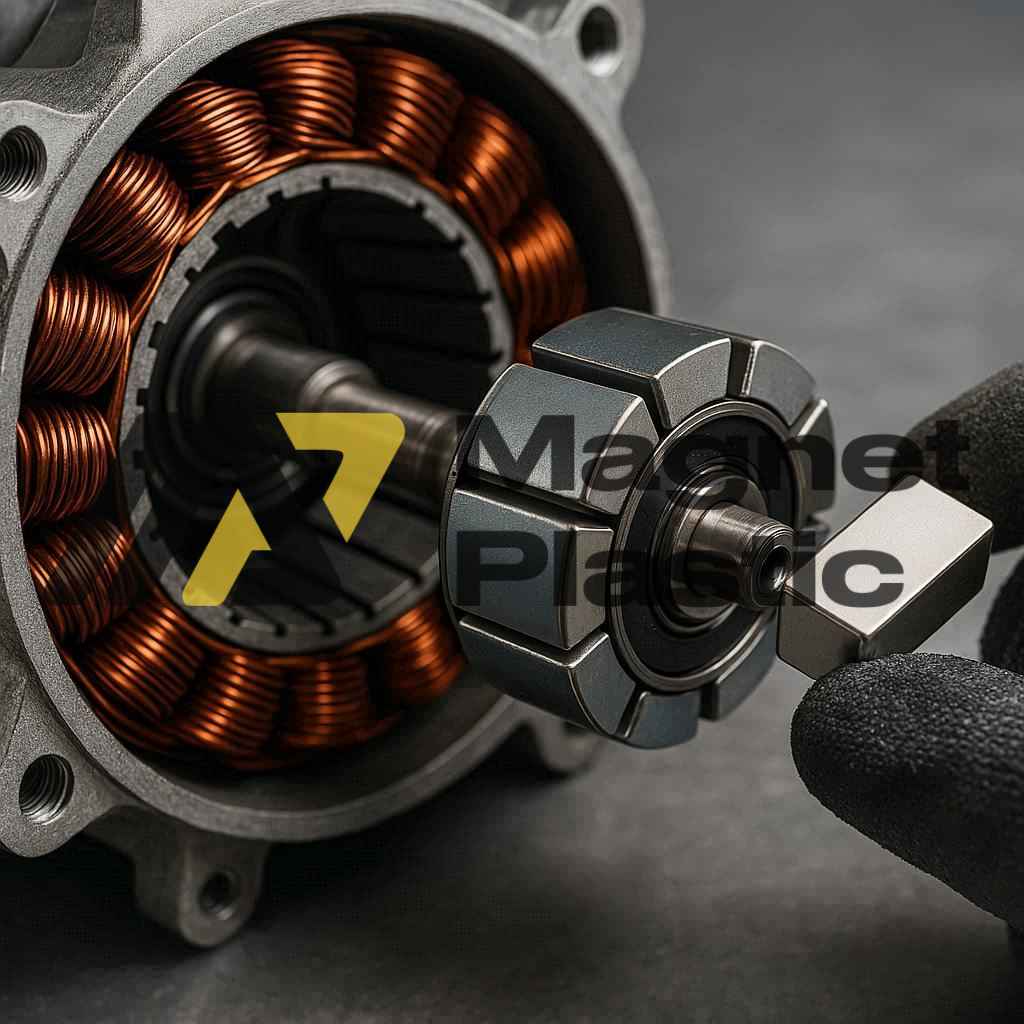The Use of Neodymium Magnets in Electric Motors
In recent years, the rise of electric mobility has sparked a true revolution in the automotive industry. Electric vehicles (EVs) are not only a more sustainable alternative to internal combustion cars but have also paved the way for technological innovations in key areas such as energy storage, power electronics, and, most importantly, electric motors. Within this field, neodymium magnets have taken center stage thanks to their unique properties, which enhance efficiency, performance, and compactness in propulsion systems.
What are neodymium magnets?
Neodymium magnets are permanent magnets made from an alloy of neodymium, iron, and boron (NdFeB). They are considered the strongest type of rare-earth magnets available today, providing a much higher magnetic flux density compared to other materials such as ferrite or alnico. This makes them strategic components in high-tech sectors, ranging from consumer electronics to wind turbines, and most notably in the electric motors of modern vehicles.
Application in electric motors
In an electric motor, magnets play a key role by generating the magnetic field required to produce motion. Neodymium magnets are mainly used in permanent magnet (PM) motors, which are widely adopted in electric vehicles due to their high efficiency. Unlike motors that rely on electromagnets to maintain the field, PM motors consume less energy and deliver more stable performance.
Thanks to these magnets, it is possible to design smaller, lighter, and more powerful motors, saving both space and weight in vehicles. From small auxiliary motors that power windows, windshield wipers, and automatic locks, to the powerful propulsion systems of EVs and hybrids, neodymium magnets are found throughout the automobile.
Advantages of neodymium magnets
- High energy efficiency: By improving the conversion of electrical energy into mechanical energy, motors with neodymium magnets allow vehicles to achieve greater range per battery charge.
- Size and weight reduction: Their strong magnetic density enables more compact motors without sacrificing power, which is crucial in modern vehicle design.
- Durability and low maintenance: With no brushes required, these motors have fewer moving parts subject to wear, increasing service life and reducing maintenance costs.
- Enhanced dynamic performance: Permanent magnet motors deliver faster acceleration and more precise control, improving the overall driving experience.
Challenges and the future of magnets in the automotive sector
One of the main challenges of using neodymium magnets is their sensitivity to high temperatures. Although advanced grades can operate at up to 220 °C, thermal management systems are needed to prevent loss of magnetism. Additionally, reliance on neodymium—a “rare earth” element with limited supply chains—raises strategic concerns about costs and sustainability.
Research is progressing toward hybrid motor technologies, such as interior permanent magnet (IPM) synchronous motors, and toward the development of new magnetic materials that reduce dependence on rare-earths. These innovations promise even greater efficiency and reliability for electric motors.
Conclusion
The use of neodymium magnets in electric motors is a cornerstone of electric vehicle development. Their ability to increase energy efficiency, reduce motor size, and enhance performance has made EVs a viable and competitive alternative to combustion-based vehicles. As technology continues to evolve, neodymium magnets will remain a key player in the transition toward cleaner, more efficient, and more sustainable transportation.
